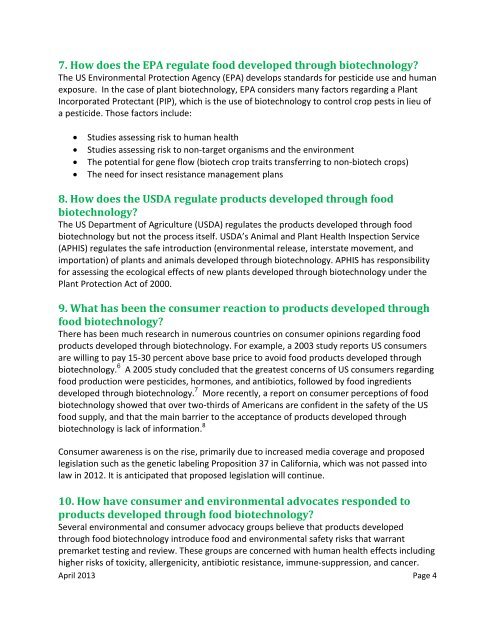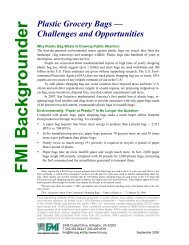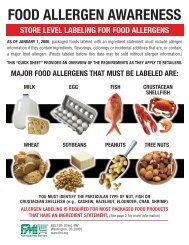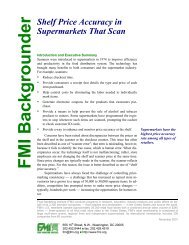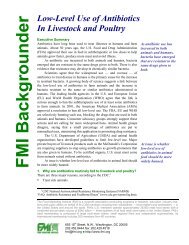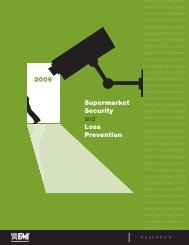Food Biotechnology - Food Marketing Institute
Food Biotechnology - Food Marketing Institute
Food Biotechnology - Food Marketing Institute
You also want an ePaper? Increase the reach of your titles
YUMPU automatically turns print PDFs into web optimized ePapers that Google loves.
7. How does the EPA regulate food developed through biotechnology?The US Environmental Protection Agency (EPA) develops standards for pesticide use and humanexposure. In the case of plant biotechnology, EPA considers many factors regarding a PlantIncorporated Protectant (PIP), which is the use of biotechnology to control crop pests in lieu ofa pesticide. Those factors include:• Studies assessing risk to human health• Studies assessing risk to non-target organisms and the environment• The potential for gene flow (biotech crop traits transferring to non-biotech crops)• The need for insect resistance management plans8. How does the USDA regulate products developed through foodbiotechnology?The US Department of Agriculture (USDA) regulates the products developed through foodbiotechnology but not the process itself. USDA’s Animal and Plant Health Inspection Service(APHIS) regulates the safe introduction (environmental release, interstate movement, andimportation) of plants and animals developed through biotechnology. APHIS has responsibilityfor assessing the ecological effects of new plants developed through biotechnology under thePlant Protection Act of 2000.9. What has been the consumer reaction to products developed throughfood biotechnology?There has been much research in numerous countries on consumer opinions regarding foodproducts developed through biotechnology. For example, a 2003 study reports US consumersare willing to pay 15-30 percent above base price to avoid food products developed throughbiotechnology. 6 A 2005 study concluded that the greatest concerns of US consumers regardingfood production were pesticides, hormones, and antibiotics, followed by food ingredientsdeveloped through biotechnology. 7 More recently, a report on consumer perceptions of foodbiotechnology showed that over two-thirds of Americans are confident in the safety of the USfood supply, and that the main barrier to the acceptance of products developed throughbiotechnology is lack of information. 8Consumer awareness is on the rise, primarily due to increased media coverage and proposedlegislation such as the genetic labeling Proposition 37 in California, which was not passed intolaw in 2012. It is anticipated that proposed legislation will continue.10. How have consumer and environmental advocates responded toproducts developed through food biotechnology?Several environmental and consumer advocacy groups believe that products developedthrough food biotechnology introduce food and environmental safety risks that warrantpremarket testing and review. These groups are concerned with human health effects includinghigher risks of toxicity, allergenicity, antibiotic resistance, immune-suppression, and cancer.April 2013 Page 4


